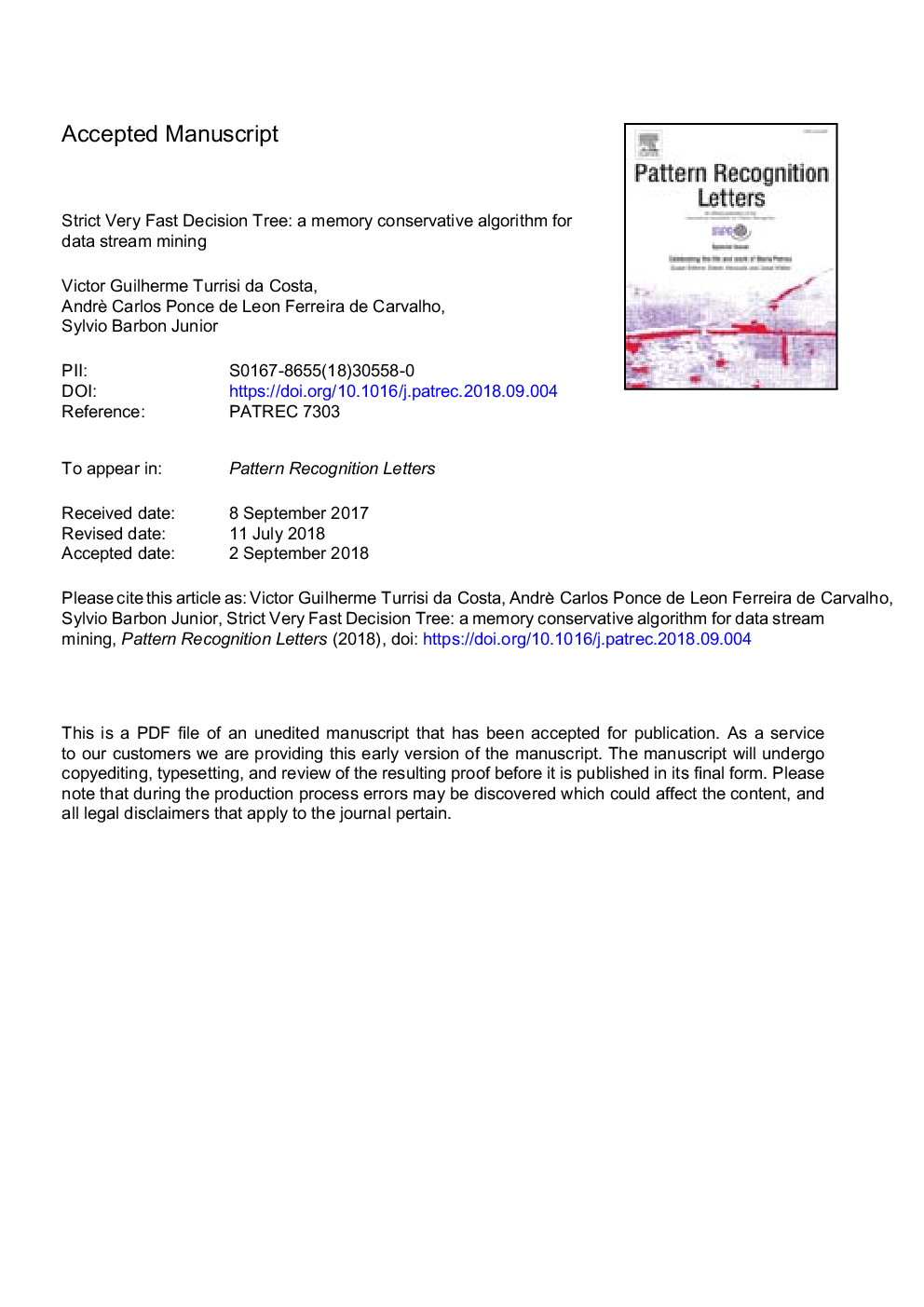| Article ID | Journal | Published Year | Pages | File Type |
|---|---|---|---|---|
| 10146108 | Pattern Recognition Letters | 2018 | 10 Pages |
Abstract
Dealing with memory and time constraints are current challenges when learning from data streams with a massive amount of data. Many algorithms have been proposed to handle these difficulties, among them, the Very Fast Decision Tree (VFDT) algorithm. Although the VFDT has been widely used in data stream mining, in the last years, several authors have suggested modifications to increase its performance, putting aside memory concerns by proposing memory-costly solutions. Besides, most data stream mining solutions have been centred around ensembles, which combine the memory costs of their weak learners, usually VFDTs. To reduce memory costs, keeping predictive performance, this study proposes the Strict VFDT (SVFDT), a novel algorithm based on the VFDT. The SVFDT algorithm minimises unnecessary tree growth, substantially reducing memory usage and keeping competitive predictive performance. Moreover, since it creates much more shallow trees than VFDT, the SVFDT can achieve a shorter processing time. Experiments were carried out comparing the SVFDT with the VFDT in 11 benchmark data stream datasets. This comparison assessed the trade-off between accuracy, memory, and processing time. Statistical analysis showed that the proposed algorithm obtained similar predictive performance and significantly reduced processing time and memory use. Thus, SVFDT is a suitable option for data stream mining with memory and time limitations, recommended as a weak learner in ensemble-based solutions.
Related Topics
Physical Sciences and Engineering
Computer Science
Computer Vision and Pattern Recognition
Authors
Victor Guilherme Turrisi da Costa, André Carlos Ponce de Leon Ferreira de Carvalho, Sylvio Barbon Junior,
